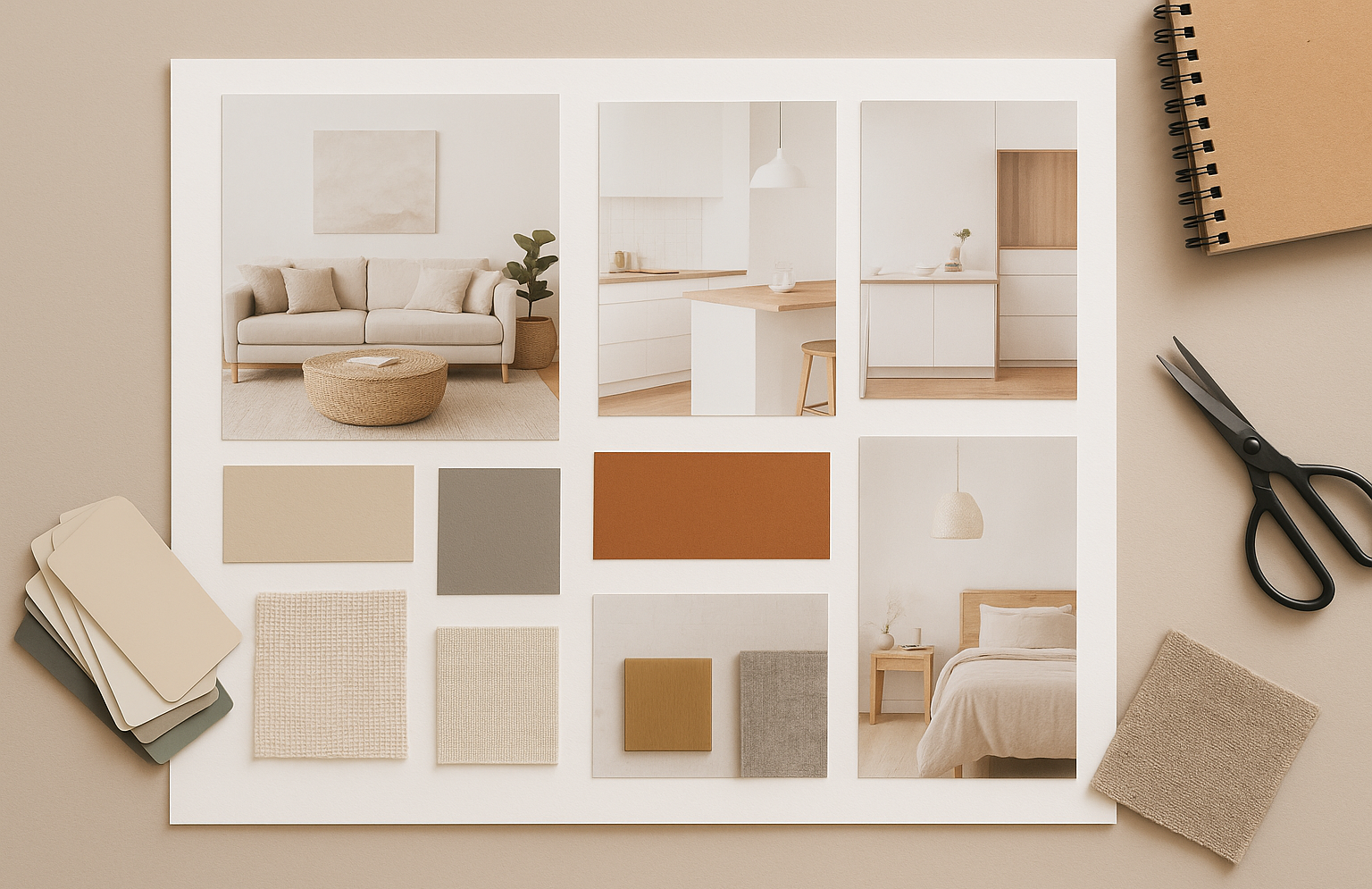
How to Make an Interior Design Mood Board: Step-by-Step Guide
Creating a mood board is a crucial step in any interior design project. It helps you visualize your ideas, organize your inspiration, and ensure that your space has a cohesive look and feel. Whether you’re designing a cozy living room, a modern office, or a luxury bedroom, a mood board keeps your vision clear and actionable.
What is an Interior Design Mood Board?
An interior design mood board is a collection of images, textures, color palettes, materials, and other visual elements that reflect the overall theme and style of your space. It acts as a reference point for designers, homeowners, or clients to make informed decisions about furniture, colors, and décor.
Why Use a Mood Board?
Visualize Your Ideas: See how colors, textures, and materials work together.
Stay Organized: Keep all design inspirations in one place.
Save Time and Money: Prevent costly mistakes by planning in advance.
Communicate Your Vision: Share your design concept easily with clients, family, or contractors.
Step-by-Step Guide to Making a Mood Board
1. Define Your Design Goals
Before you start collecting images, identify the purpose of the space and the mood you want to create. Use adjectives like cozy, modern, vibrant, or minimalist to guide your choices.
2. Collect Inspiration
Look for inspiration online, in magazines, or even in real-life spaces. Collect images of furniture, wall colors, lighting, fabrics, and accessories. Platforms like Pinterest, Instagram, and Houzz are excellent sources.
3. Choose Your Color Palette
Pick 3–5 main colors that define your space. Include neutrals for balance and accent colors to highlight key elements.
4. Select Materials and Textures
Add swatches of fabrics, wood finishes, metals, and other materials. This gives a tactile sense of how the space will feel.
5. Organize Your Elements
Group images and swatches by categories such as furniture, lighting, decor, and wall treatments. This helps you see how each element interacts with the others.
6. Create the Mood Board
You can create a mood board digitally using tools like Canva, Adobe Spark, or Pinterest, or make a physical one using a corkboard or poster board. Arrange your images and materials until you have a clear, harmonious layout.
7. Refine and Finalize
Edit out any items that don’t fit the overall theme. The final mood board should reflect a cohesive vision for your space.
Tips for an Effective Mood Board
Focus on simplicity: avoid cluttering the board with too many ideas.
Include real-life textures and samples when possible.
Revisit and adjust your board as your design evolves.
Conclusion
A mood board is more than just a collection of images it’s a strategic tool that guides your interior design project from concept to completion. By following this step-by-step guide, you can confidently plan a space that is stylish, functional, and uniquely yours.